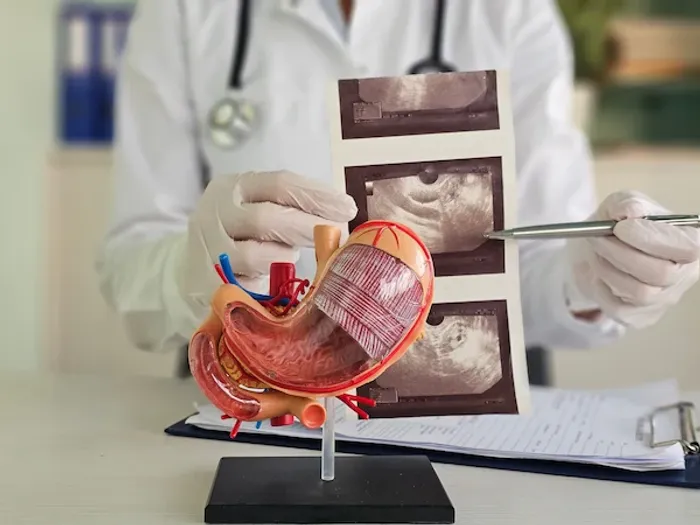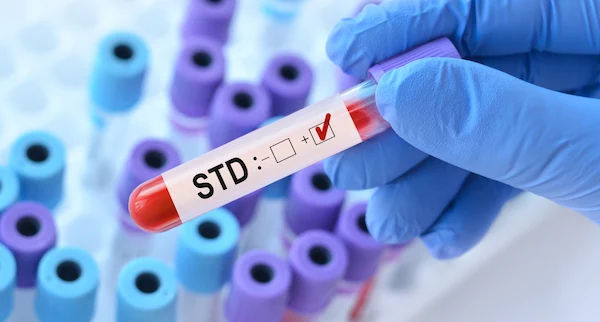Guide to Making Patient Diagnosis Fast and Simple with Endoscopic Ultrasound (EUS)
Explore how endoscopic ultrasound (EUS) helps make patient diagnosis fast and simple. Learn its advantages, procedure steps, and how it improves accuracy with minimal risk.

Written by Dr. Mohammed Kamran
Reviewed by Dr. Rohinipriyanka Pondugula MBBS
Last updated on 11th Sep, 2025

Introduction: Why Speed Matters in Medical Diagnosis
When you’re facing unexplained symptoms, the waiting period for a diagnosis can be the most stressful part. The uncertainty takes a toll, and every day counts, especially when dealing with potentially serious conditions. The medical field is constantly evolving to make patient diagnosis fast and more accurate, and one of the most significant advancements in this area is endoscopic ultrasound (EUS). This sophisticated procedure combines the best of two worlds—a detailed endoscopic camera and high-frequency ultrasound imaging—to provide a clear, close-up view of your digestive tract and surrounding organs. This guide will demystify EUS, explaining how it streamlines the diagnostic journey, reduces the need for multiple tests, and delivers precise answers quickly, getting you on the path to the right treatment faster.
What is Endoscopic Ultrasound (EUS)? A Powerful Two-in-One Tool
Endoscopic ultrasound (EUS) is a minimally invasive procedure that allows doctors to examine the lining and walls of your upper and lower gastrointestinal tract, as well as nearby organs like the pancreas, liver, gallbladder, and lymph nodes.
How Does EUS Work? The Technology Explained Simply
- A thin, flexible tube called an endoscope is gently inserted through the mouth or rectum. At the tip of this endoscope is a tiny ultrasound probe. The endoscope provides a direct video image of the digestive lining, while the ultrasound uses sound waves to create detailed images of the structures beneath the surface and beyond the gut wall. It’s like giving a doctor a powerful camera to see the outside of a house and a sophisticated radar to see the internal plumbing and framework all at once.
EUS vs. Traditional Scans: Why It’s Often a Superior Choice
- While CT scans and MRIs are excellent tools, they are taken from outside the body. EUS provides a much closer, high-resolution view because the ultrasound probe is placed directly next to the area of interest. This proximity eliminates interference and allows for the detection of tiny abnormalities that other scans might miss. This superior imaging capability is a primary reason it leads to a faster diagnosis for pancreatic cancer and other elusive conditions.
Consult a Gastroenterologist for the best advice
How EUS Makes Your Diagnosis Faster and More Accurate
The true power of EUS lies in its dual ability to see and sample tissue simultaneously.
Unmatched Precision: Seeing What Other Tests Miss
- EUS provides incredibly detailed images of the layers of the digestive tract wall and adjacent organs. It can identify small tumors, cysts, stones, and areas of inflammation with precision that external imaging cannot match. This means doctors can characterise a lesion's size, shape, and consistency during the initial examination, immediately narrowing down the list of potential diagnoses.
The Biopsy Advantage: One Procedure, Two Results
- This is the game-changer. If the doctor sees a suspicious area, they can perform a minimally invasive biopsy procedure called EUS-guided fine-needle aspiration (FNA) or fine-needle biopsy (FNB) right then and there. A tiny needle is passed through the endoscope to collect tissue or fluid samples from the target area. This eliminates the need for a separate, more invasive surgical biopsy. Getting a visual assessment and a tissue sample in one sitting dramatically accelerates the entire diagnostic timeline.
Common Conditions Where EUS Speeds Up Diagnosis
EUS is particularly valuable for diagnosing conditions that are difficult to assess with other methods.
Pancreatic Conditions: From Cysts to Cancer
- The pancreas is deep inside the abdomen, making it a challenge for traditional scans. EUS is the gold standard for evaluating pancreatic masses, cysts, and pancreatitis. It is critical for early detection and staging of pancreatic cancer.
Bile Duct and Gallbladder Issues
- EUS can expertly image the bile duct and gallbladder to identify small stones, tumors, or blockages that can cause jaundice and pain, often making the diagnosis process faster than a series of other tests.
Digestive Tract Tumors and Submucosal Lesions
- It can determine the depth of tumors in the esophagus, stomach, and rectum (crucial for staging cancer) and evaluate mysterious bumps in the gut wall (submucosal lesions) like gastrointestinal stromal tumors (GISTs).
Lung and Lymph Node Assessment (Mediastinal EUS)
- By passing the scope down the esophagus, doctors can access lymph nodes in the chest between the lungs (the mediastinum). This is a far simpler way to sample these nodes to diagnose or stage lung cancer and other diseases compared to surgery.
The Patient Journey: What to Expect During an EUS Procedure
Preparation: Getting Ready for Your Scan
- Preparation depends on whether you’re having an upper EUS (through the mouth) or a lower EUS (through the rectum). For an upper EUS, you will need to fast for 6-8 hours beforehand. For a lower EUS, you will undergo a bowel preparation similar to a colonoscopy. Your doctor will provide specific instructions.
The Day of the Procedure: A Step-by-Step Guide
- You will receive sedation to ensure you are comfortable and sleepy throughout the procedure. The doctor will gently insert the endoscope. The procedure typically takes 30 to 60 minutes. You will not feel any pain or remember the details due to the sedative medication.
Recovery and Getting Your Results
- You’ll spend time in a recovery area until the sedation wears off. You will need someone to drive you home. Most people resume normal activities the next day. The initial visual findings may be discussed soon after, but the biopsy results usually take a few days. If your symptoms persist and initial tests are inconclusive, consulting a specialist who performs EUS through Apollo24|7 can be a logical next step for a definitive diagnosis.
The Direct Benefits: Why EUS is a Game-Changer for Patients
- Speed: Combines diagnosis and biopsy into one session.
- Accuracy: Provides high-resolution images for precise evaluation.
- Minimally Invasive: Avoids the need for exploratory surgery.
- Safety: Generally a very safe procedure with a low risk of complications.
- Guided Treatment: Results help create a highly targeted and effective treatment plan.
Are There Any Risks or Limitations?
EUS is considered extremely safe. Potential risks, which are rare, include bleeding, infection, perforation (a tear in the GI tract lining), or a reaction to sedation. The benefits of obtaining a quick and accurate diagnosis almost always outweigh these minimal risks. It is also a specialised procedure requiring a highly trained gastroenterologist.
Conclusion: Empowering Yourself with Advanced Diagnostic Options
The anxiety of waiting for a diagnosis can be overwhelming. Understanding the tools available to modern medicine can empower you to have informed conversations with your doctor. Endoscopic ultrasound represents a pinnacle of diagnostic efficiency, offering a path to answers that is both faster and less invasive. If you are navigating a complex digestive or thoracic health issue, ask your doctor if EUS could be the right step to streamline your journey to wellness. For expert consultation on whether EUS is appropriate for your condition, you can book a physical visit to a specialist with Apollo24|7 to discuss your diagnostic options.
Consult a Gastroenterologist for the best advice
Consult a Gastroenterologist for the best advice

Dr Rohit Sureka
Gastroenterology/gi Medicine Specialist
15 Years • MBBS, DNB General Medicine, DNB Gastroenterology
Jaipur
Apollo 247 virtual - Rajasthan, Jaipur

Dr. Umakanth Eskala
Gastroenterology/gi Medicine Specialist
16 Years • DM (GASTRO)
Visakhapatnam
Apollo 24|7 Clinic - Andhra Pradesh, Visakhapatnam

Dr Harish K C
Gastroenterology/gi Medicine Specialist
15 Years • MBBS MD DM MRCP(UK) (SCE-Gastroenterology and Hepatology)
Bangalore
Manipal Hospital, Bangalore

Dr. Paramesh K N
Gastroenterology/gi Medicine Specialist
16 Years • MBBS, MS ( General Surgery), DNB ( Surgical Gastroenterology)
Hyderabad
Sprint Diagnostics Centre, Hyderabad

Dr. Neeraj Nagaich
Gastroenterology/gi Medicine Specialist
26 Years • MBBS, MD General Medicine, DM Gastroenterology
Jaipur
Dr. Neeraj Nagaich Clinic, Jaipur
Consult a Gastroenterologist for the best advice

Dr Rohit Sureka
Gastroenterology/gi Medicine Specialist
15 Years • MBBS, DNB General Medicine, DNB Gastroenterology
Jaipur
Apollo 247 virtual - Rajasthan, Jaipur

Dr. Umakanth Eskala
Gastroenterology/gi Medicine Specialist
16 Years • DM (GASTRO)
Visakhapatnam
Apollo 24|7 Clinic - Andhra Pradesh, Visakhapatnam

Dr Harish K C
Gastroenterology/gi Medicine Specialist
15 Years • MBBS MD DM MRCP(UK) (SCE-Gastroenterology and Hepatology)
Bangalore
Manipal Hospital, Bangalore

Dr. Paramesh K N
Gastroenterology/gi Medicine Specialist
16 Years • MBBS, MS ( General Surgery), DNB ( Surgical Gastroenterology)
Hyderabad
Sprint Diagnostics Centre, Hyderabad

Dr. Neeraj Nagaich
Gastroenterology/gi Medicine Specialist
26 Years • MBBS, MD General Medicine, DM Gastroenterology
Jaipur
Dr. Neeraj Nagaich Clinic, Jaipur
Frequently Asked Questions
Is an EUS procedure painful?
No. You will be under sedation or general anaesthesia to ensure you are comfortable and asleep throughout the procedure. You should not feel any pain.
How long does it take to get biopsy results from an EUS?
While the doctor may share visual observations shortly after the procedure, the analysis of the tissue samples (pathology) typically takes 3-7 business days.
What is the difference between an endoscopy and an endoscopic ultrasound?
A standard endoscopy only views the inner lining of the digestive tract. An EUS has an ultrasound component that sees through that lining into the wall itself and the surrounding organs and structures, and it can also perform biopsies of those deeper areas.
Is EUS safe for diagnosing pancreatic cysts?
Yes, EUS is one of the safest and most accurate methods for evaluating pancreatic cysts. It allows for detailed imaging and fluid aspiration to analyse cancer cells.
Can EUS be used for treatment, or only diagnosis?
While renowned for diagnosis, EUS is also used for treatments like draining pancreatic pseudocysts, administering pain blocks (celiac plexus neurolysis), and accessing the bile duct for drainage (choledochoduodenostomy).




